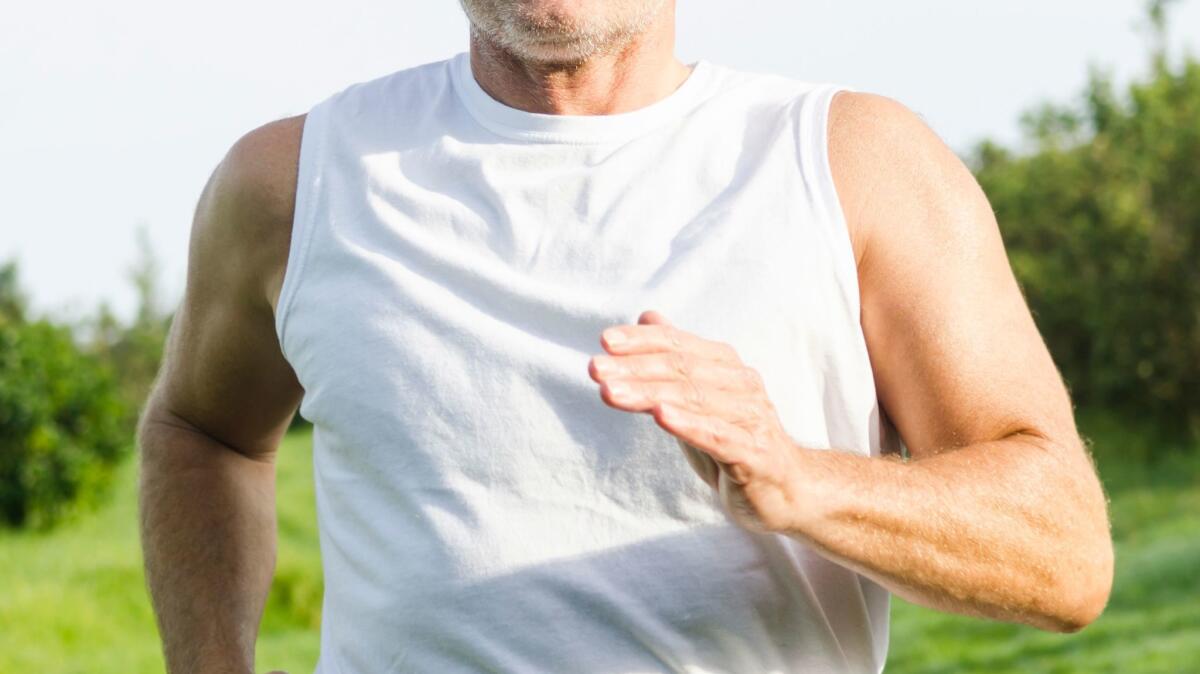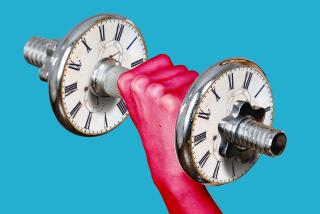That moment you realize you can’t work out like you used to ...

As I near the half-century mark, I find there are more exercises that I physically cannot do.
Mentally, however, what I can’t do is stop being active.
Aging requires adaptations.
When we were young, we felt bulletproof and pushing through pain was rarely problematic. Our youthful bodies healed themselves quickly and rarely was there a need to reach for ibuprofen. Active adults in a too-often sedentary population can take pride in their physical accomplishments. But it’s tough to realize you’re not as tough as you once were.
The attitude adjustment can be the hardest part. It’s a mental shift from being a conquering workout warrior to a fighter of a valiant delaying action against age.
Here are some tips to help you do just that:
“Exercise is supposed to be medicine, not what you need medicine because of,” said Nick Tumminello, the National Strength and Conditioning Assn.’s 2016 Personal Trainer of the Year. “The No. 1 goal is: Don’t get hurt.”
It wasn’t Arnold Schwarzenegger we have to blame for popularizing the phrase “No pain, no gain.” Rather, it was Jane Fonda who brought it into our popular culture via her workout videos in the 1980s. Though Tumminello asserts that discomfort from fatigue (“feel the burn”) is fine, the mentality of pushing through pain has led to more than one torn rotator cuff or bulging lumbar disc.
“If it hurts, don’t do it,” he said.
An axiom he uses is, “Fit the exercise to the person, not the person to the exercise.” There is no one perfect way to do an exercise. We have different anatomy and different abilities and limitations. “Find ways to work around your limitations,” Tumminello said. “You need to experiment and modify.” As an example, he discussed the depth of a back squat. Some proclaim that you must do a deep squat, but if a shallower depth is less painful, that’s fine. “That’s fitting the exercise to your body.”
Speaking of squats, sometimes you need to give up an exercise entirely. Tumminello said squats lead to pain in the lower back for some people. And modifying squat positioning can put pressure on knee joints. At some point, it may be time to realize that “that exercise just may not be for you,” he said.
And that’s OK, because “there is no exercise we have to do,” he said. There are other ways to train legs that don’t hurt.
Just because you’re slowing down doesn’t mean you should stop.
Reed Ferber, a professor of biomechanics at the University of Calgary and director of the Running Injury Clinic, put it this way: “Any form of exercise is beneficial for health.”
So you may not need to slow down as much as you thought. If your running days are truly over, there is always cycling or swimming.
And lifting weights can be less about vanity and more about functionality.
“There are so many great alternatives to stay fit,” Ferber said.
Fell is a certified strength and conditioning specialist and owner of bodyforwife.com.
ALSO
Why midnight snacking is the worst
7 reasons why you can’t lose the weight






